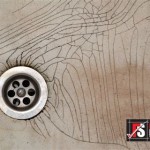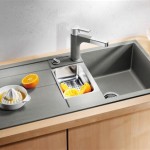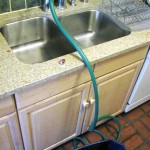Antique Double Sink Bathroom Vanity: A Detailed Exploration
The antique double sink bathroom vanity represents a fusion of historical design elements and contemporary functionality. Its inclusion in a bathroom space indicates an appreciation for craftsmanship, unique aesthetics, and the practical benefits of dual sinks. Understanding the historical context, construction, design variations, and maintenance requirements of these vanities is crucial for making informed purchasing and care decisions.
The term "antique" generally denotes an object that is at least 100 years old, though the definition can sometimes be applied more loosely, particularly in the context of furniture, to indicate items that are simply vintage or representative of a specific historical period. In the case of antique double sink bathroom vanities, the age and authenticity are significant factors in determining its value and the level of restoration it may require. Vanities described as "antique-style" or "antique-inspired" are newly manufactured pieces that mimic the appearance of older vanities but lack the intrinsic historical value.
The presence of two sinks in a bathroom vanity provides several pragmatic advantages. Multiple users can simultaneously utilize the space, increasing efficiency during morning routines or when a bathroom is shared. The double sink arrangement also often includes expanded counter space, offering increased storage and preparation areas. In larger bathrooms, a double sink vanity can visually fill the space and add a sense of grandeur and symmetry.
Historical Influences on Antique Vanity Design
The design of antique double sink bathroom vanities often reflects prevailing aesthetic trends from various historical periods. Victorian-era vanities, for example, may feature ornate carvings, dark wood finishes such as mahogany or walnut, and decorative hardware. These vanities often incorporated marble countertops and porcelain sinks. The emphasis was on elaborate detail and a sense of luxury.
Art Deco vanities, prominent in the 1920s and 1930s, often exhibit geometric shapes, streamlined designs, and the use of materials like chrome and mirrored glass. These vanities reflect a move towards modernity and a departure from the more overtly ornamental styles of previous eras. The influence of machine-age aesthetics is evident in the clean lines and functional approach.
Mid-century modern vanities, popular from the 1940s to the 1960s, emphasize simplicity, functionality, and natural materials. These vanities often feature clean lines, tapered legs, and the use of wood such as teak or birch. The focus is on creating a harmonious and uncluttered space. Minimalist hardware and understated design elements are characteristic of this period.
Identifying the historical period of an antique vanity requires careful examination of its design elements, materials, construction techniques, and hardware. Consulting with antique specialists and researching historical furniture styles can aid in accurate identification and authentication.
Construction and Materials of Antique Vanities
The construction of antique double sink bathroom vanities involved a range of traditional woodworking techniques. Dovetail joints, mortise-and-tenon joints, and hand-carved details are common features of well-made antique pieces. The quality of the construction and the durability of the joinery affect the longevity and structural integrity of the vanity.
The materials used in the construction of antique vanities vary depending on the historical period and the intended style. Hardwoods such as oak, maple, cherry, mahogany, and walnut are commonly used for the vanity cabinet. These woods are valued for their strength, durability, and attractive grain patterns.
Countertops for antique vanities are frequently made of marble, granite, or other natural stones. Marble is prized for its elegant appearance and smooth surface, while granite is known for its durability and resistance to stains. The selection of countertop material influences the overall aesthetic and functionality of the vanity.
Sinks in antique vanities are typically made of porcelain, cast iron, or copper. Porcelain sinks are known for their smooth, non-porous surface and ease of cleaning. Cast iron sinks are durable and resistant to chipping, while copper sinks offer a unique aesthetic appeal and antimicrobial properties. The choice of sink material affects the maintenance requirements and the overall visual impact of the vanity.
Hardware, including knobs, pulls, hinges, and faucets, plays a significant role in the overall look and functionality of an antique vanity. The hardware is often made of brass, bronze, or other metals, and may feature intricate designs or decorative details. Replacing or restoring the hardware can significantly enhance the appearance of an antique vanity.
Factors to Consider When Purchasing and Maintaining an Antique Vanity
Purchasing an antique double sink bathroom vanity involves several important considerations. The size and layout of the bathroom space must be carefully assessed to ensure that the vanity fits comfortably and complements the existing décor. The style of the vanity should also be compatible with the overall design aesthetic of the bathroom.
The condition of the antique vanity is a crucial factor. Inspect the vanity for signs of damage, such as cracks, warping, or water damage. Examine the joinery to ensure that it is solid and secure. Assess the condition of the countertop, sink, and hardware. If significant restoration is required, factor the cost of repairs into the purchase price.
Authenticity is a key consideration when purchasing an antique vanity. Obtain documentation or expert appraisal to verify the age and provenance of the piece. Be wary of vanities that are described as "antique-style" or "antique-inspired" without clear indication of their age and origin.
Maintaining an antique double sink bathroom vanity requires careful attention to cleaning and care. Avoid using harsh chemicals or abrasive cleaners that can damage the finish or the surface of the countertop and sink. Use gentle, pH-neutral cleaners specifically designed for antique furniture and natural stone.
Protect the vanity from excessive moisture and humidity. Ensure that the bathroom is well-ventilated to prevent water damage and mold growth. Repair any leaks promptly to prevent water from seeping into the vanity cabinet.
Regularly polish the wood finish with a high-quality furniture polish to protect and enhance its appearance. Periodically inspect the hardware and tighten any loose screws or hinges. Replace any worn or damaged hardware as needed.
If the vanity requires significant restoration, consult with a professional antique furniture restorer. Restorers have the expertise and tools to repair damage, refinish the wood, and restore the hardware without compromising the historical integrity of the piece.
Storage considerations are also significant when selecting and integrating an antique double sink vanity. While many antique pieces may originally have been designed without specific storage in mind, modern plumbing requirements can necessitate modifications. Ensuring that the vanity offers adequate storage solutions for toiletries, towels, and other bathroom essentials is essential for functionality.
Plumbing compatibility is another factor that requires careful attention. Antique vanities may not be configured to accommodate modern plumbing fixtures. It may be necessary to modify the vanity to accommodate standard drainpipes, water lines, and faucets. Consult with a plumber to ensure that the vanity can be properly installed and connected to the existing plumbing system. The location of shut-off valves and the routing of water lines should be considered to maximize the storage space within the vanity.
Lighting is important when incorporating an antique double sink vanity. Consider the placement of the vanity in relation to natural light sources and existing artificial lighting. Adding sconces or other lighting fixtures around the vanity can enhance its visual appeal and provide adequate illumination for grooming and other tasks. The style of the lighting fixtures should complement the overall design aesthetic of the bathroom.

86 Adelina Antique Style Double Sink Bathroom Vanity In White Finish With Beige Stone Countertop

Adelina 72 Inch Antique Double Sink Bathroom Vanity Fully Assembled Chestnut Finish

72 Inch Antique Double Sink Bathroom Vanity Vintage Vanilla Finish Carrara White Marble Top Toeletta Bagno Bagni In Marmo Mobili

72 Inch Antique Double Sink Vanity Polished Cherry Wood Finish Bathroom

72 Antique White Traditional Style Double Sink Beckham Bathroom Vanit Chans Furniture

Antique Bathroom Vanity For Single Or Double Sink We Custom Etsy

72 Inch Maria Vanity Double Sink Antique White

James In 72 Naples Double Vanity With Granite Top Antique White Free Shipping Modern Bathroom

60 Antonia Vanity 60inch Double Sink Chest Antique White

60 Inch White Double Sink Bathroom Vanity







